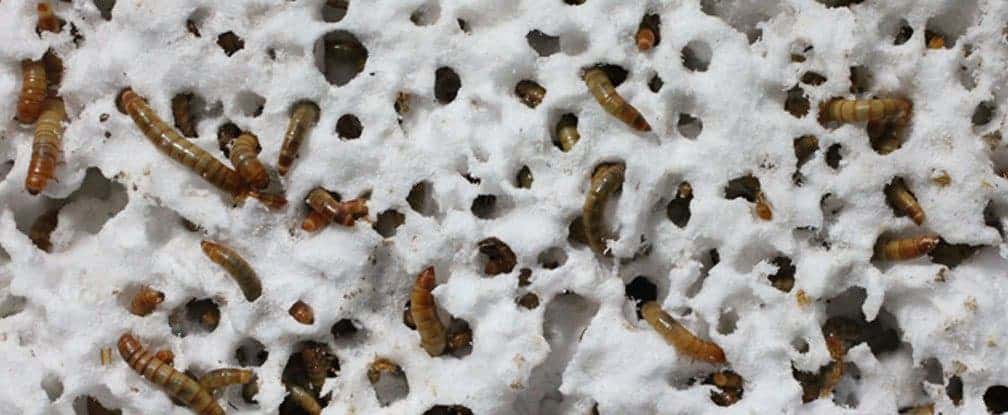When it comes to human waste products and pollutants, plastic claims the crown. There are very few things our planet can throw at it to get rid of the polymer. It becomes bendy and rippy and shredy but it just won’t go away. When you compound the resilience of this headstrong material with the sheer quantities of it that we dump into the oceans, it looks like a pretty one-sided battle that nature can’t win, despite all our desperate efforts to increase recycling and take it out of landfills.
But now it seems that mother nature still had a trick up her sleeve, and the non-biodegradable reign of plastic is about to come to an end, undermined by the heroic appetite of the mealworm.
Researchers at the Stanford University in US and Beihang University in China worked together and found that the larval state of the darkling beetle — known as the mealworm — can safely process and even subsist on a diet of Styrofoam and other polysterene thanks to bacteria in the guts of this worm that can naturally biodegrade plastic during the digestive process. This could spell the end of the landfill as we know it today, and could finally give us the means to clean our oceans of plastic accumulate from the last decades.
“Our findings have opened a new door to solve the global plastic pollution problem,” co-author Wei-Min Wu, a senior research engineer in the Department of Civil and Environmental Engineering at Stanford, said in a statement.
During the study, 100 mealworms ate their way through 34 to 39 milligrams of Styrofoam each day, turning it into carbon dioxide and biodegraded droppings. They remained healthy on a diet of plastic, and their droppings were tested safe for use as soil crops.
While the amount of plastic we throw away each day might dwarf the worms’ appetite as recorded in the study, they’re just the first step. Now that scientists have a starting point, further research might allow us to engineer more powerful enzymes for plastic degradation, even kinds that the mealworms can’t process — such as polypropylene, microbeads, and bioplastics.
The researchers are also looking to find whether a marine equivalent of the mealworm may exist, as hundreds of thousands of tonnes of plastic in the world’s oceans are an ongoing environmental concern.
“There’s a possibility of really important research coming out of bizarre places,” said Craig Criddle, a professor of civil and environmental engineering who supervised the research. “Sometimes, science surprises us. This is a shock.”
The studies are published in Environmental Science & Technology, here and here.










